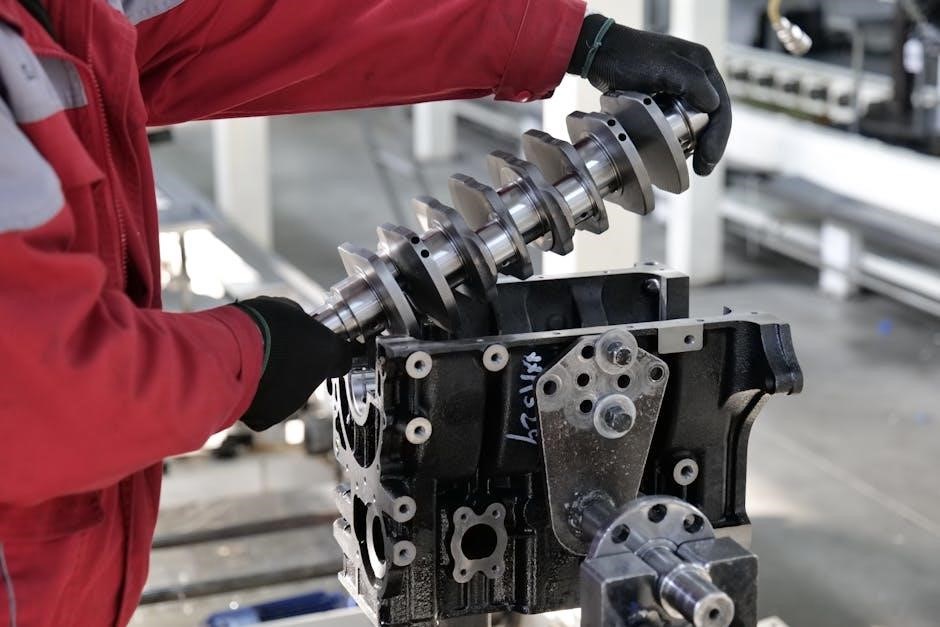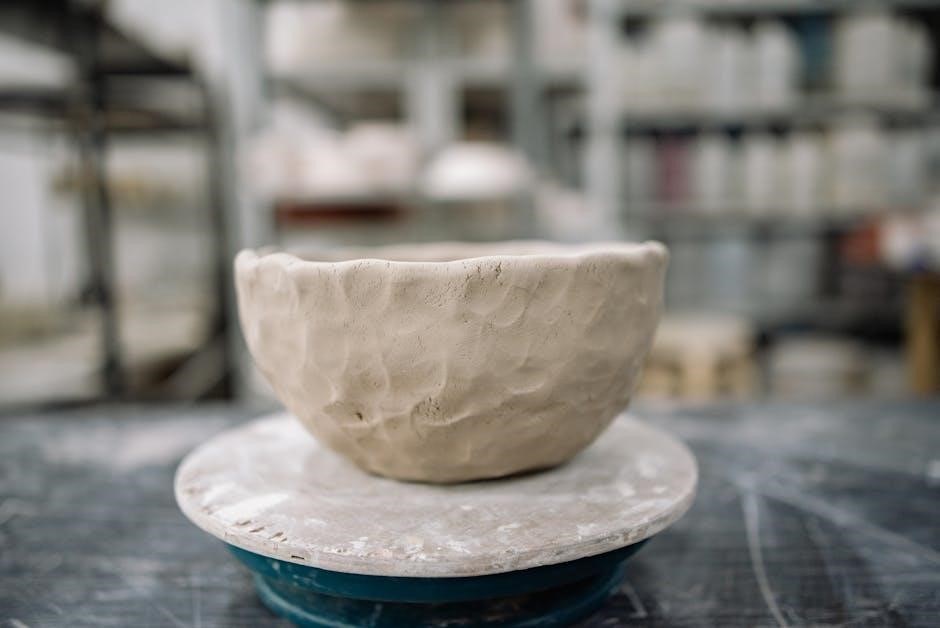DSI installation enhances your device’s functionality by enabling custom firmware, SD card setup, and access to exclusive features, ensuring a seamless and optimized user experience․
1․1 Overview of DSI Installation Process
The DSI installation process involves preparing your device, installing hardware components, and setting up custom firmware․ Start by downloading necessary files and backing up data․ Use tools like a spudger for disassembly, then install the motherboard or other components․ Reassemble the device and proceed with software installation, including custom firmware and TWiLightMenu․ Finally, configure settings and verify successful installation․ This process ensures optimal functionality and customization for your DSI system, enhancing its capabilities and user experience․
1․2 Importance of Following Instructions
Following DSI installation instructions is crucial to ensure safety, avoid device damage, and maintain warranty compliance․ Proper steps prevent electrical component damage and ensure compatibility․ Incorrect installation can void warranties or cause system malfunctions․ Adhering to guidelines guarantees optimal performance and functionality․ Always handle components carefully and follow safety precautions to avoid risks․ This ensures a successful and reliable installation process, preserving your device’s integrity and enhancing its capabilities effectively․

System Requirements for DSI Installation
Ensure compatibility with DSI-compatible devices, updated firmware, and a suitable SD card․ Essential tools like a spudger and proper software are required for a smooth installation process․
2․1 Compatible Devices and Hardware
Ensure your device is compatible with DSI installation, such as the Nintendo DSi XL or similar models․ Use a compatible SD card with sufficient storage capacity․ Essential hardware tools include a spudger for disassembly and an FFC ribbon cable for safe connections․ Verify that your device meets the required specifications to avoid installation issues․ Proper tools and compatible hardware ensure a smooth and successful installation process․
2․2 Software and Firmware Requirements
Install the latest custom firmware compatible with your DSI device for optimal performance․ Ensure you have the correct firmware version installed to avoid compatibility issues․ Download the necessary files, such as BOOT․NDS and TWiLightMenu, from trusted sources․ Use an SD card formatted with an ext3 partition for smooth software installation․ Avoid using outdated or incorrect firmware, as it may cause system instability․ Always follow the official instructions for firmware updates to ensure a successful installation․
2․3 Necessary Tools and Accessories
To ensure a smooth DSI installation, gather essential tools and accessories․ A Phillips screwdriver and spudger are required for disassembling the device․ Use an SD card (minimum 2GB) formatted with an ext3 partition for storing firmware and data․ A computer with internet access is needed for downloading files․ Additional items include a compatible SD card reader and anti-static gloves for safe handling of components․ Ensure all tools are readily available to avoid delays during the installation process․

Preparing for DSI Installation
Format the SD card with an ext3 partition and download necessary files like TWiLightMenu․ Ensure all data is backed up and tools are ready for installation․
3․1 Setting Up the SD Card
Begin by formatting your SD card with an ext3 partition to ensure compatibility․ Use tools like GParted for Linux or similar software for other OS․ Create a second partition if needed․ Copy the TWiLightMenu folder and necessary files to the root directory․ Ensure the SD card is properly sized and compatible with your DSI device․ Always back up important data before proceeding with installation․ Verify the integrity of downloaded files to prevent corruption issues during setup․
3․2 Downloading Required Files
Visit trusted sources to download the latest TWiLightMenu and Unlaunch files․ Extract TWiLightMenu-DSi․7z and ensure the BOOT․NDS file is included․ Verify file integrity to avoid corruption․ Use official repositories or well-known forums for reliable downloads․ Be cautious of unofficial sources to prevent malware․ Ensure your internet connection is stable during downloads․ Once downloaded, organize files in a dedicated folder for easy access during installation․ Always follow the most recent guides for compatibility with your device․
3․3 Backing Up Data (If Applicable)
Before proceeding with DSI installation, back up your important data, such as saved games, DSiWare titles, and custom settings․ Use a compatible storage device or transfer files to a computer to prevent data loss; Ensure all critical information is securely copied․ Avoid interrupting the backup process to maintain data integrity․ This step is essential for safeguarding your content during the installation process․ Complete the backup before making any system changes․

Hardware Installation Steps
Disassemble the DSi XL carefully, install the motherboard or other components, and reassemble the device․ Follow detailed instructions to avoid damaging internal parts or losing screws․
4․1 Disassembling the DSi XL (If Required)
Disassembling the DSi XL is necessary for installing internal components․ Flip the device, open the display, and use a spudger to pry between the upper and lower case․ Gently remove screws and separate the casing․ Use caution to avoid damaging internal parts or losing screws․ Store small components safely for reassembly․ Follow detailed instructions to ensure proper handling of electrical components and maintain device integrity․
4․2 Installing the Motherboard or Other Components
Handle the motherboard and components with care to prevent static damage․ Align the motherboard with the casing, ensuring proper fitment of ports and connectors․ Secure it using screws, tightening gently to avoid stripping threads․ Reconnect cables and ribbons carefully, ensuring they are fully seated․ Double-check all connections before reassembling the device․ Power on the system to test functionality and verify successful installation of the motherboard or other components․
4․3 Reassembling the Device
Reattach the lower and upper casings, ensuring proper alignment of screws and connectors․ Replace all removed screws, tightening them securely but avoiding overtightening․ Reconnect any cables or ribbons carefully, ensuring they are fully seated․ Close the display and test the device to confirm all functions work correctly․ Handle components with care to prevent damage during reassembly․ Once complete, power on the system to verify successful installation and functionality of the DSi device․

Software Installation Process
Install custom firmware to unlock advanced features, then configure TWiLightMenu for seamless navigation․ Boot from the SD card to initialize the system and verify successful software setup․
5․1 Installing Custom Firmware
Begin by downloading the latest custom firmware and Unlaunch for your DSI․ Extract the files and copy them to your SD card’s root directory․ Ensure your SD card is properly formatted and contains the necessary bootstrap file․ Use a compatible tool like WiiXplorer or DSiXplorer to transfer files․ Insert the SD card into your DSI and boot into the custom firmware setup․ Follow on-screen instructions to complete the installation, enabling features like homebrew apps and enhanced system functionality․ Always backup your data before proceeding․
5․2 Setting Up TWiLight Menu
Download the latest TWiLightMenu-DSi․7z file and extract it․ Copy the _nds folder and BOOT․NDS file to your SD card’s root directory․ Ensure your SD card is properly formatted and accessible․ Insert the SD card into your DSI and navigate to the DSi Menu․ Select the TWiLight Menu launcher to access your library of DS games and homebrew apps․ This setup enables enhanced functionality, allowing you to organize and run applications seamlessly from your SD card․
5․3 Booting from the SD Card
Insert your prepared SD card into the DSI and power on the device․ Navigate to the TWiLight Menu using your preferred method․ Select the BOOT․NDS file to initiate the boot process․ The system will load custom firmware, enabling access to homebrew applications and DS games stored on your SD card․ Ensure the SD card is properly formatted and contains all necessary files to avoid errors during boot․ This step is crucial for unlocking enhanced functionality and custom features on your DSI․

Configuring DSI Settings
Configure display brightness, sound levels, and Wi-Fi connectivity for optimal performance․ Calibrate touchscreens and test settings to ensure functionality․ Adjust preferences for a personalized experience․
6․1 Initial Setup and Calibration
Begin by powering on your device and navigating to the settings menu․ Follow on-screen instructions to select your language and region․ Calibrate the touchscreen by tapping the calibration points accurately․ Adjust display brightness and sound levels to your preference․ Ensure proper Wi-Fi connectivity by entering your network password․ Complete the initial setup to access all features․ Calibration ensures precise touch functionality․ Proper setup guarantees optimal performance and user experience․
6․2 Adjusting Display and Sound Settings
Access display settings to adjust brightness, contrast, and screen orientation for optimal viewing․ Navigate to sound settings to modify volume levels, enable mute, or select audio modes․ Customize these settings to enhance your experience․ Ensure adjustments align with your preferences for both visual clarity and audio quality․ Proper calibration ensures vibrant colors and clear sound․ These tweaks optimize device performance and user satisfaction, making your DSI installation more enjoyable and functional․
6․3 Connecting to Wi-Fi
To connect your DSI to Wi-Fi, navigate to the system settings menu and select “Wi-Fi Settings․” Choose your network from the available options and enter the password when prompted․ Ensure your router is nearby for a stable connection․ Once connected, you can access online features, download updates, and enjoy enhanced functionality․ If issues arise, restart your router or check the signal strength to ensure a reliable connection․ Proper Wi-Fi setup is crucial for optimal performance and online capabilities․

Troubleshooting Common Issues
This section covers resolving installation errors, connectivity problems, and performance issues․ Check connections, update firmware, and consult guides or forums for troubleshooting assistance․
7․1 Resolving Installation Errors
Common installation errors include corrupted files, incorrect SD card formatting, or incompatible firmware․ Verify the SD card’s second partition is properly formatted as ext3․ Ensure all files are correctly extracted and placed in the root directory․ Check for firmware updates and reinstall custom firmware if necessary․ Consult official guides or forums for specific error codes and solutions․ Rebooting the device or reinstalling TWiLight Menu may resolve boot issues․ Always follow step-by-step instructions carefully to avoid system instability․
7․2 Fixing Connectivity Problems
Connectivity issues during DSI installation often arise from Wi-Fi configuration or SD card problems․ Ensure your device is connected to the correct network and Wi-Fi settings are properly configured․ Restarting the router or device can resolve temporary connection issues․ Verify the SD card is compatible and formatted correctly․ If using custom firmware, check for updates or reinstall TWiLight Menu to ensure proper functionality․ Consult official troubleshooting guides or forums for specific error resolutions․
Power cycling the device may also restore connectivity․
7․3 Addressing Performance Issues
Performance issues after DSI installation may stem from outdated firmware or incorrect settings․ Ensure all software components are up-to-date․ Check for corrupted files and reinstall necessary programs․ Optimize SD card performance by formatting it as FAT32 and ensuring sufficient free space․ Disable unnecessary background processes to improve efficiency․ Adjust display and sound settings to reduce strain on hardware․ If issues persist, restore default settings or reinstall custom firmware to achieve optimal performance․
Regular system maintenance is recommended․

Advanced DSI Installation Topics
8․1 Installing Unlaunch for Custom Firmware
Install Unlaunch by downloading the latest version, transferring files to your SD card, and following on-screen instructions to enable custom firmware and enhanced functionality․
Installing Unlaunch enables custom firmware on your DSI, offering enhanced functionality․ Download the latest Unlaunch version, transfer files to your SD card, and follow on-screen instructions․ Ensure your device is properly prepared and avoid damaging components․ This process allows for advanced customization and access to exclusive features, improving your overall experience․ Handle electrical parts safely to prevent damage and ensure a successful installation․
8․2 Setting Up DSIWare from SD Card
Setting up DSIWare from an SD card allows you to run DSi applications directly․ Format your SD card and create a folder structure for DSIWare files․ Copy the ․nds or ․cia files to the appropriate directory․ Use tools like TWiLight Menu for easy access․ Ensure compatibility and follow installation guides carefully․ This method offers flexibility and convenience for managing your games and applications, enhancing your DSI experience with minimal effort and setup․
8․3 Integrating with Other Systems (e․g․, Raspberry Pi)
Integrating DSI with systems like Raspberry Pi enhances functionality by enabling custom projects․ Connect the DSI display to the Raspberry Pi, ensuring compatibility with the Pi’s GPIO or HDMI interface․ Install necessary drivers and configure the system to recognize the DSI screen․ Use tools like TWiLight Menu for seamless integration․ This setup allows for homebrew applications, retro gaming, or custom interfaces, offering a versatile and powerful solution for enthusiasts and developers alike․

Health and Safety Precautions
Always disconnect power before handling electrical components․ Use proper tools to avoid damage․ Handle sensitive parts with care to prevent device malfunction and ensure personal safety․
9․1 Handling Electrical Components Safely
Disconnect power before handling electrical components to avoid risks․ Use proper tools and protective gear to prevent damage or injury․ Avoid forcing connections or bending cables․ Ground yourself to prevent static discharge․ Keep components away from moisture and extreme temperatures․ Handle sensitive parts by the edges to avoid contact with electrical pathways․ Follow manufacturer guidelines for safe installation practices to ensure device longevity and personal safety during the DSI installation process․
9․2 Avoiding Damage to the Device
To prevent damage during DSI installation, handle the device gently and ensure all components are securely connected․ Avoid applying excessive force, which could bend or break internal parts․ Use appropriate tools to prevent scratching or stripping screws․ Keep the work area clean and dry to avoid moisture-related issues․ Follow step-by-step instructions carefully, and double-check connections before powering on․ Proper handling and adherence to guidelines will help maintain device integrity and ensure a successful installation without causing permanent harm to the hardware․

Legal and Warranty Information
Complying with manufacturer guidelines ensures warranty validity․ Unauthorized modifications may void your warranty and violate terms of service․
10․1 Compliance with Manufacturer Guidelines
Adhering to manufacturer guidelines is crucial to ensure your DSI installation complies with legal standards and maintains warranty validity․ Unauthorized modifications can void your warranty and lead to legal issues․ Always follow official instructions to avoid operational disruptions and ensure compliance with regulatory requirements․ Failure to do so may result in device malfunctions or legal consequences․ Refer to the official documentation for specific compliance details to safeguard your device and legal standing․
10․2 Understanding Warranty Implications
Installing custom firmware or modifying your DSI may void its warranty, as it violates manufacturer terms․ Unauthorized alterations can lead to repair costs and service denials․ Always review warranty terms before proceeding with modifications․ Manufacturer guidelines outline acceptable practices, and deviating from them can result in warranty termination․ Ensure compliance to maintain coverage and avoid potential legal or financial consequences․ Backup data before proceeding, as modifications may erase stored information․ Understanding these implications is essential for informed decision-making․
After completing the DSI installation, verify all features are functioning correctly․ Test performance, connectivity, and customization options to ensure optimal operation․ Final checks confirm successful installation and readiness for use․
11․1 Verifying Successful Installation
After completing the installation, boot your device to ensure custom firmware and TWiLightMenu are functioning․ Check if the SD card is recognized and all features are accessible․ Verify that DSiWare and homebrew applications launch correctly․ Test Wi-Fi connectivity and ensure no performance issues arise․ If all components work seamlessly, the installation is successful․ This step confirms that your DSI setup is ready for use and optimized for performance․
11․2 Final Testing and Optimization
Conduct thorough testing to ensure all installed features function optimally․ Run various applications and games to check for stability and performance․ Adjust settings like display brightness and sound levels for personal preference․ Verify Wi-Fi connectivity and test online features, if applicable․ Optimize TWiLightMenu for faster access to frequently used items․ Ensure smooth operation by closing unnecessary background tasks․ This final check guarantees a polished and user-friendly experience on your DSI device․










